WHEN HIS SUPPORTERS attacked the local police station at Chauri Chaura, Gandhi decided to put a stop to non- cooperation. But the writing had been on the wall for some time. The more the Mahatma saw of Indian popular movements inspired by him and other leaders, the less he liked them. What he saw in Malabar and Chauri Chaura persuaded him that the Indian ‘masses’ lacked the discipline necessary for the rigours of non-cooperation. If attacked by the police, they would retaliate rather than turning the other cheek; and when they hit back, they did so with a bloodthirsty rage that appalled him.
After this, Gandhi backed away for ever from mass mobilisation. He insisted that satyagraha was not for the many but for the select few: the handful of disciples he had tutored at his aashrams in self-discipline and the rigorous religious practice of seeking truth. The grand dream, that the non-cooperation Khilafat campaign would bring about swaraj in a single year, lay in ashes.
Another legacy of the Mapilla rebellion was the end of ‘Hindu-Muslim unity’, as conceived of by the Mahatma, the Ali brothers and Maulana Azad. These men had accepted that ‘Hindus’ and ‘Muslims’ were indeed different communities, each with its different cultures and histories, each with its own internal problems to resolve. But they had believed that ‘Hindus’ and ‘Muslims’ could work together, support each other and live peaceably as ‘good neighbours’. Heightened religiosity in politics, they hoped, would help achieve this, as better Hindus and better Muslims would be better fellow countrymen, and more ethical Indians. But after the Mapilla rebellion, many leaders concluded that this emphasis on religiosity was in fact heightening communal competition and violence. The failure of the non-cooperation Khilafat model had revealed that practical intercommunal cooperation required forms of leadership and social control that did not exist, and rested on alliances at the top that were simply too weak to withstand buffeting from below.
These events created space for the return of liberal constitutionalists to the centre ground of Indian politics. They were ready, waiting in the wings. Another factor that helped them stand forth was the fact that the Raj, weakened by war and demoralised by these events, recognised the need for reform.
The Government of India Act of 1919 introduced the new system of ‘diarchy’, which distinguished between different ‘heads’ of power and devolved those it deemed less important to local and municipal councils. It encouraged Indians to run for elections to these councils, where they could raise taxes and spend local monies on local welfare. Many Indians were happy to oblige. While Gandhi and his closest coterie of followers, and also the Ali brothers, called for the boycott of the new councils, they no longer had solid majorities behind them. A large ‘Pro-changer’ group now emerged in the Congress, which preferred to work in the reformed councils, scrutinising and debating legislation, and resisting the British state from within. The Swarajya party, representing ‘Pro-changers’ (both Hindus and Muslims), was born. It decided, contra Gandhi, to contest the elections. In the Bengal council, Chittaranjan Das, the province’s most admired Congress leader, formed an alliance with Huseyn Shaheed Suhrawardy, a charismatic Muslim politician, against British members of the council.
A new chasm opened up in the Congress as ‘No-changers’ battled ‘Pro-changers’ for the soul of the party. The warfare between them was more decorous than the shoe-hurling, head-breaking affair at Surat, but the split was ‘deeper and wider’.
These were early signs of a major realignment in the subcontinent’s politics. Although mass movements against the Sarkar (government) and its local despots would continue to erupt, not least in 1942, leaders like Gandhi and the Ali brothers began to recede into the background. Contrary to legend, Gandhi remained in the wings, for the most part, in the years before Britain’s departure in 1947. In these early decades of ‘the long decolonisation’, different alliances began to be forged, as Indian politicians attempted to build coalitions that could consolidate their influence under a wounded and ever-weaker government. In a trend enhanced by the Government of India Act of 1935, which introduced provincial autonomy and larger electorates, such coalition-building became ‘the new normal’. Many of its features would endure until the 1980s.
These were early signs of a major realignment in the subcontinent’s politics. Although mass movements against the sarkar and its local despots would continue to erupt, leaders like Gandhi and the Ali brothers began to recede into the background. Contrary to legend, Gandhi remained in the wings, for the most part, in the years before Britain’s departure in 1947. In these early decades of ‘the long decolonisation’, different alliances began to be forged
Share this on 

Most political histories of twentieth-century South Asia focus on the moments of high drama—swadeshi, non-cooperation, civil disobedience, partition and the Bangladesh Liberation War of 1971. Yet these moments were exceptional ruptures in the dusty-brown fabric of the routine. If we turn our gaze instead towards the humdrum, to the mundane mechanics of order, what might we learn about the compromises that shaped the ‘everyday’ in the last decades of the Raj?
With hindsight, it is clear that the lineaments of these new structures—already well established in the era of Gokhale— re-emerged in the 1920s, after the Khilafat movement had collapsed, Gandhi had withdrawn non-cooperation, and this model of Hindu-Muslim unity had revealed its fragility.
At their heart was a set of coalitions between ‘liberals’ and ‘pragmatists’, both of whom were keen to ensure the establishment of a political order that they could influence, and which was capable of bringing pressure to bear upon the state without unleashing havoc on the streets, in the mills and fields. These alliances required constant management and negotiation. The dull political routine was thus more fragile than it appeared to be. Each time they were reconstructed, coalitions came again together in slightly new ways. The emergent new order was at once brittle and tenacious.
Indian ‘liberal’ politics of this period had a different accent from liberalism in the West. Indian liberals examined how its different aspects (positivism, constitutionalism, justice, economic development, social progress) were ‘suited to Indian conditions’ or could be made so to do. Their liberalism was grounded above all in the particularities of their colonial status, and Queen Victoria’s proclamation. Their consciousness of racism—the fact that they were not equal in the eyes of the law—made them angrily committed to the liberal principle of legal equality. Inevitably western-educated, often lawyers, they worked for change within the law, putting pressure on the British by using the new councils the diarchy system had created. They were constitutionalists to a man (or indeed woman: Sarojini Naidu, the Bengali poetess, emerging as a major political figure in this period). This was an age in which constitutionalism matured as a robust form of politics in India.

The liberals were aware that, to succeed, they needed the support of the pragmatists: men who wanted stability, who wanted to make money, who knew how ‘to get their work done’ and call in favours, and who were keen to influence policy on matters that affected them. In this period, businessmen stepped forward in significant numbers to join politics. In the countryside too landlords left the kutcheries (accounts offices) to their naibs and aamils (deputies and chief accountants) and joined the new local and provincial boards. In 1935, after legislative assemblies were established in the provinces, they fought and won elections. This was a new kind of politics for them, but they learned its mechanics soon enough.
These new entrants into the political arena were not always English-educated. Instead of gaining a higher education after rudimentary schooling, many had joined the family firm, on which so much business in South Asia rests. Yet they too wanted change. Above all, they wanted customs barriers to protect Indian industries, lower sales taxes and lower revenue demands in the countryside to open up Indian markets. To bring pressure to bear upon government, they needed political allies who claimed to represent large communities, and liberal friends who could articulate their case with eloquence on the councils. But they were all clear about one thing: they wanted change to come about in an orderly fashion. They had no desire to shake up the status quo. They had too much to lose.
THE KEY LIBERALS of this era were Muhammad Ali Jinnah of Bombay, and Motilal Nehru (father of Jawaharlal) and Tej Bahadur Sapru from the United Provinces. All were lawyers and they were most comfortable with legalistic modes of reasoning. Gokhale and Dadabhai were their role models. Their lifestyles were urbane.
Sapru and Nehru Senior were both Brahmins whose ancestors had migrated from Kashmir to North India in an earlier age, where they were part of a tight-knit expatriate community which came to wield a quite extraordinary influence over Indian politics for much of the rest of the century. In many ways, the two men were chalk and cheese. Where Motilal was showy, Sapru did not draw attention to himself. When Motilal thundered, Sapru spoke with calm fluency. He seems to have been far less interested in money and the high life than his Kashmiri fellow liberal.
Motilal Nehru was very different, but memorable in his own way. As part of the service elite working for the Mughal court, Motilal’s father, Gangadhar Nehru, had been one of the stream of refugees who fled the carnage in Delhi after the Mutiny, and, having lost almost everything he possessed, soon died in his new home in Agra. Motilal, born in 1861 three months after his father’s death, had to make his own way in the world. Educated in Arabic and Persian, he only joined an English-medium school at the age of twelve. Supported by an older brother who also died young, his education was entirely in India; unlike Gandhi or Jinnah, he was never called to the bar in London.
Despite these handicaps, Motilal Nehru established a flourishing legal practice at Allahabad. His command of case law, his readiness to play hardball in court and softball outside it, helps explain his rapid rise to the top.
The opaque and reserved Jinnah could hardly have been more different, although he shared Motilal’s liberal attitudes. ‘Jinnahbhai’ was born in 1876 to a family of Khoja Ismailis, the small sect led by the Aga Khan. Although he is alleged to have converted later to Shiism, and then to the Sunni faith, he never disclosed his religious beliefs; we can’t be sure if indeed he had any. Late in life, he married for love outside the community, having fallen hard for the charms of the Parsi heiress Ruttie Petit, who was less than half his age. The attraction was mutual: she left her family for him.
Jinnah was from a middle-income background: his father, a small- time cloth merchant, came from the minor princely state of Kathiawar (where Gandhi had also grown up). In 1875, the family moved to Karachi, then a small port town in Sind, where Jinnah was educated at the madrassa. Like Gandhi, therefore, he was an outsider to mainstream nationalist politics: he did not come from the typical background or have the typical ‘English-educated’ training. Perhaps this explains his legendary prickliness.
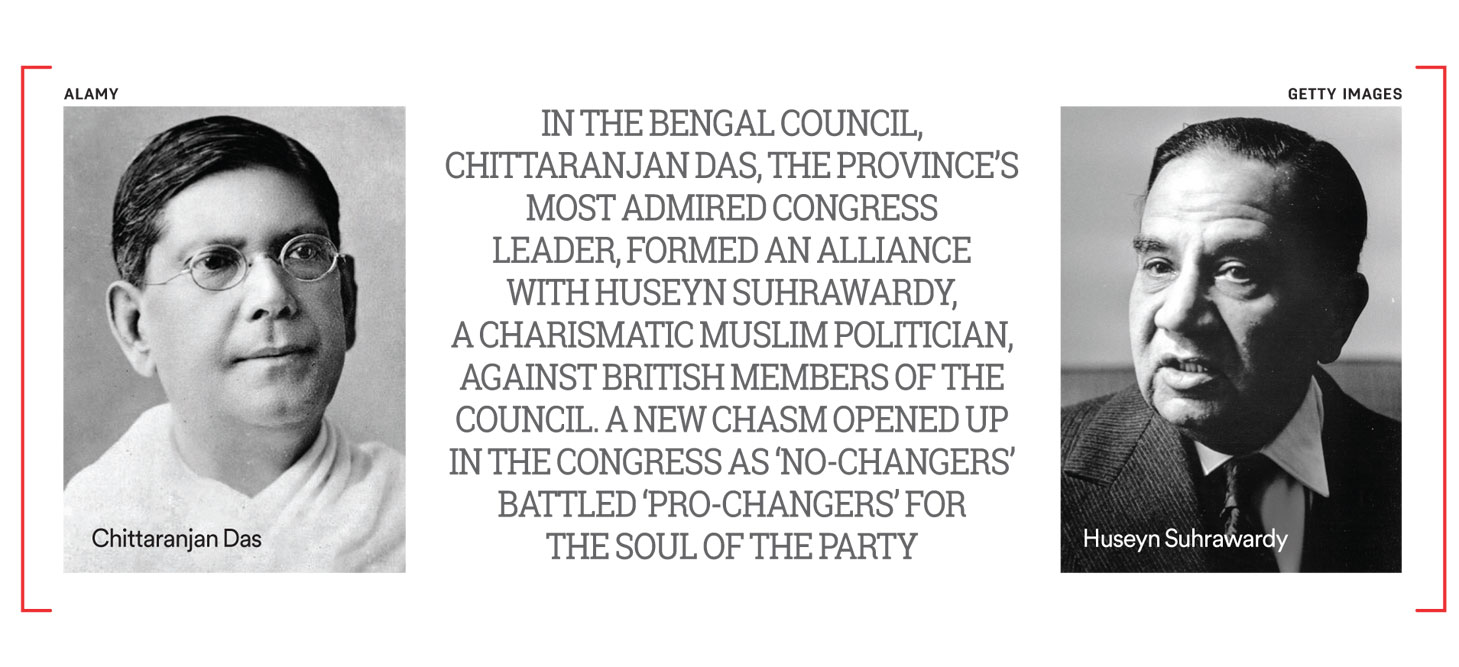
Two achievements of Jinnah’s early career in politics give a flavour of his flair for mediation. The first followed an attack in the privy council on the validity of Muslim waqfs—a form of religious trust, as old as Islam itself, by which a Muslim could make a religious endowment in perpetuity for the upkeep of his descendants, or for other charitable or religious purposes.
The second, much greater, feat, was the Lucknow Pact of 1916, which brought the Congress and the Muslim League into alliance. Jinnah was conscious that the biggest stumbling block in achieving Indian nationalist unity were Hindu-Muslim differences, and saw that both sides would have to make major concessions for these differences to be overcome. He worked tirelessly to achieve this, in a series of almost balletic moves, building on alliances he had cultivated inside each party. Using his influence with Gokhale, Jinnah first pushed for a conciliatory gesture from the Congress to the Muslim League. Communal electorates—recently promised to the Simla Deputation by Minto, and of which Jinnah did not approve—had become a key stumbling block in the way of collaboration between the two parties.
Next Jinnah tried to extract countervailing concessions from the League, working with young nationalist friends inside that party, the Raja of Mahmudabad and Syed Wazir Hasan. On 31 December 1912, Jinnah argued successfully for the proposal that the League change its objective to ‘the attainment of self-government suitable to India… cooperating with other communities for the said purpose’.
This stance moved the League several steps in the direction of the Congress, and the gesture was duly acknowledged by the Congress, expressing at its Karachi session in 1913 its ‘warm appreciation of the adoption by the All-India Muslim League of the ideal of Self Government’. Again Jinnah worked behind the scenes with Gokhale to achieve this.
Next, he manoeuvred to get the Congress and the All-India Muslim League both to meet on his own turf, in Bombay, in 1916. The two national parties were minded to agree, but the Bombay Provincial League—in which Jinnah had bitter enemies, and which was split along sectarian lines between Ismailis, Shias and Sunnis—took umbrage at not having been consulted. Jinnah persuaded the Aga Khan, leader of the Ismailis, to weigh in on his behalf, and the meeting went forward, despite carping from Jinnah’s Muslim critics.
What emerged from the meeting was the Lucknow Pact: a ground-breaking agreement that ‘Mahomedans and Hindus, wherever they are in a minority. . . [should be] given proper and adequate representation having regard to their numerical strength and position’. In the provinces where Muslims were in a minority, they would be given weighted representation—more seats than the demographic facts on the ground warranted. Where Hindus were in a minority, the same principle would be followed in their favour.
The Pact thus proposed a form of positive discrimination in a composite nation, to generate goodwill and trust between the two largest ‘communities’. It was not—dare I say it—a bad basis for nationhood for South Asia. Motilal Nehru and Sapru helped cement the compromise, persuading Hindus to relinquish to the Muslims thirty per cent representation in the United Provinces, even though they represented barely thirteen per cent of the population. Annie Besant (whose influence had grown enormously with the establishment of the Home Rule League movement), Motilal Nehru and even Tilak worked together to line up the Congress party behind the Pact.
Jinnah’s role then was to persuade Punjabi and Bengali Muslims to surrender the communal majorities that demography on its own would have given them, to bolster the position of Muslims in provinces where they were fewer in number. This took time, but in the end they caved in to the Bombay lawyer’s persuasion.
The Pact, achieved through a series of concessions by the central leadership of the two parties, countered majoritarianism in the provinces. While it might have had all the weaknesses of the multicultural politics of a later era, had it survived, the Lucknow Pact may well have had their strengths too: it recognised group rights, and responded to the fears and aspirations of minorities. That it failed makes it one of the great missed opportunities in South Asian history, reminding us once more that partition was not inevitable.
(This is an edited excerpt from Joya Chatterji’s Shadows at Noon: The South Asian Twentieth Century)
About The Author
Joya Chatterji is Professor of South Asian History and a Fellow of Trinity College, Cambridge. She specialises in modern South Asian history and is the author of, among other titles, The Spoils of Partition
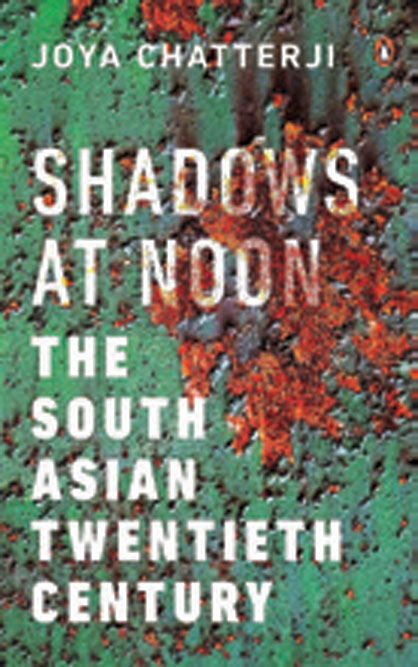
/wp-content/uploads/2023/07/Liberals1.jpg)

/wp-content/uploads/2025/05/Cover-War-Shock-1.jpg)










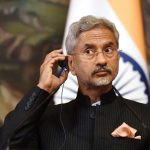
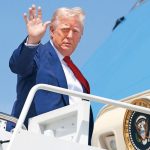
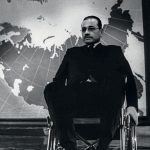
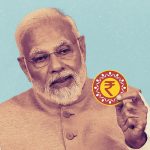

More Columns
On Being Young Surya San
Why Are Children Still Dying of Rabies in India? V Shoba
India holds the upper hand as hostilities with Pakistan end Rajeev Deshpande